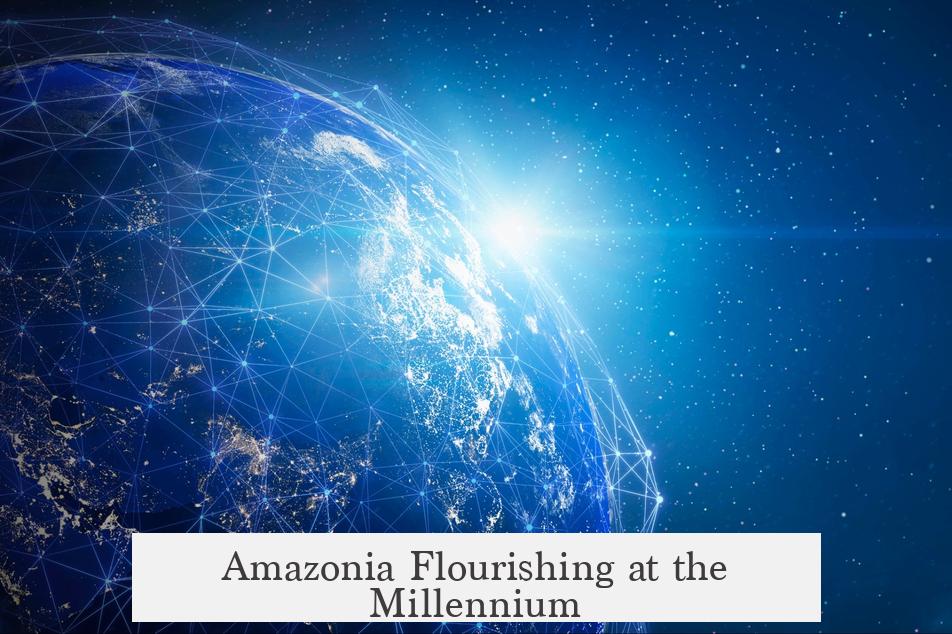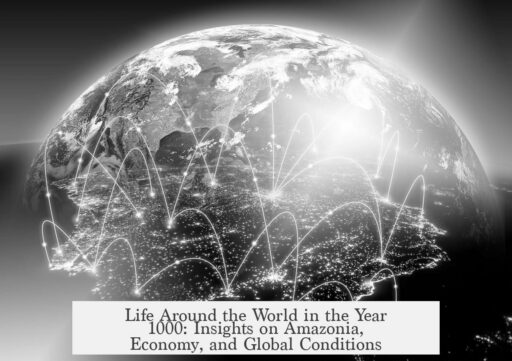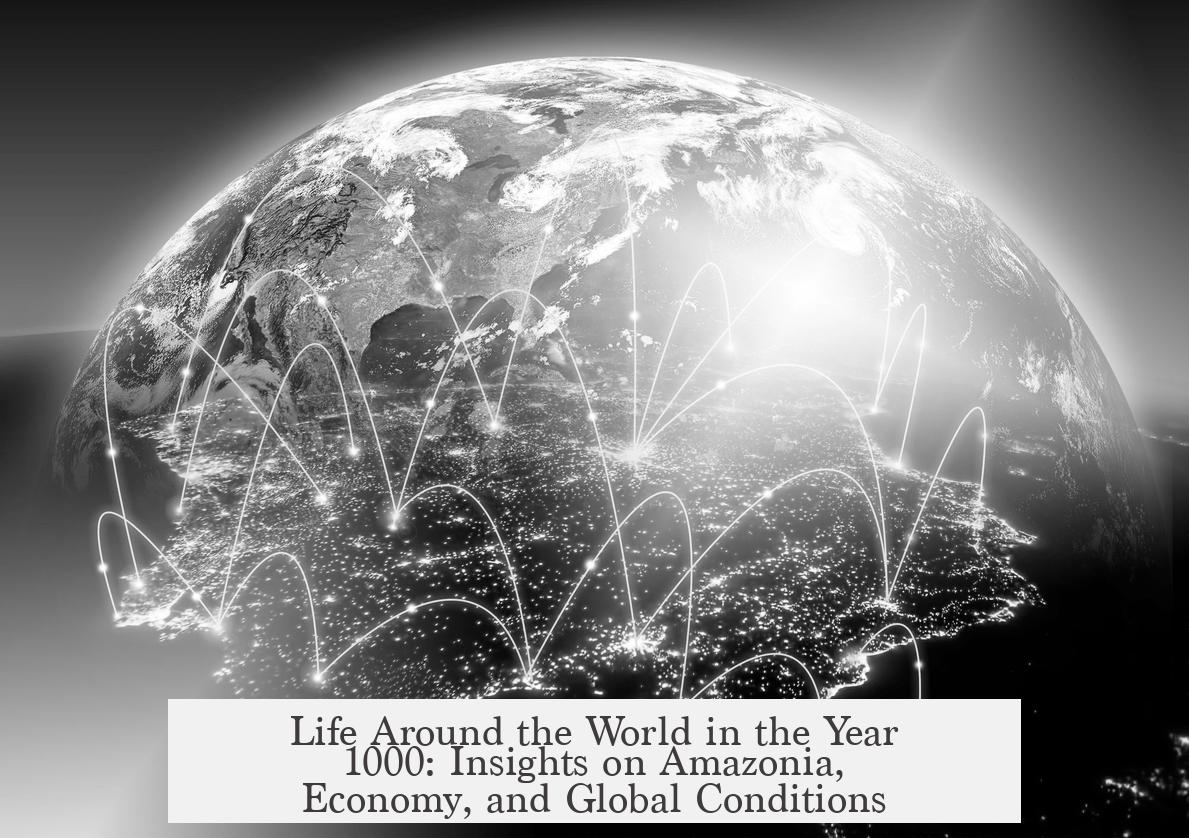Life around the world in the year 1000 varied greatly by region, with distinctive cultures, economies, and social structures shaping daily existence. In Amazonia, this period marked a peak of prosperity for indigenous societies, centered on riverine settlements and specialized trade networks.
While the year 1000 holds significance in Christian chronology, many global populations did not use this dating system. Therefore, the idea of a “special” or notable year was limited largely to Europe. Around the Amazon basin, life thrived independently of this framework.
In Amazonia, the Marajoara culture reached its height, supporting up to 100,000 inhabitants on Marajó Island alone. These people lived in towns of 5,000 to 10,000 individuals, alongside smaller villages scattered along the vast river systems. The population of Amazonia as a whole likely numbered several million, with communities mostly concentrated near water sources.
The economy was partly driven by extensive trade linked to the unique Marajoara pottery, which traveled gradually along the Amazon River through successive exchanges between neighboring settlements. This decentralized network allowed the spread of specialized goods without domination by any single group.
Agriculture played a central role. People managed the environment carefully, creating fertile “terra preta” soils which allowed intensive farming. Silviculture, or forest farming, was common, alongside practices such as turtle farming in artificial lakes and planting useful trees near villages. These efforts ensured regular food supplies despite the challenges of the tropical environment.
Socially, some conflicts existed but were limited by low population density and distance between communities. Oral histories record migrations to avoid warfare, indicating strategies of peaceful coexistence. Quality of life by contemporary measures was relatively good, though health and security remained uncertain.
By the 14th century, Marajoara culture declined and abandoned Marajó Island for unclear reasons, signaling significant cultural change ahead. However, in 1000 CE, Amazonian societies demonstrated complex, adaptive ways of living in harmony with their environment and neighboring groups.
| Aspect | Details |
|---|---|
| Population | Several million in Amazonia; 100,000 on Marajó Island |
| Settlements | Towns (5,000–10,000 people), villages along rivers |
| Economy | Specialized pottery trade along Amazon River |
| Agriculture | Intensive farming using terra preta; forest farming; turtle farming |
| Conflict | Low, with war-avoidance through migration |
- “Year 1000” was mostly meaningful only in Christendom.
- Amazonian societies were thriving with rich cultures and trade.
- Advanced environmental management supported dense populations.
- Social networks favored conflict avoidance and cooperation.
- Future cultural shifts occurred after the 14th century decline.
What Was Life Like Around the World in the Year 1000?

Life in the year 1000 wasn’t marked by the calendar we use today—except in parts of Europe, most of the world wasn’t keeping track of time since Jesus’s birth. So while you might picture a grand global celebration or some epochal shift at the stroke of midnight on January 1, 1000, that just wasn’t a universal thing. In fact, many cultures viewed time through totally different lenses, using lunar calendars, regnal years, or agricultural cycles. So, what was actually happening around the globe then? Let’s take a fascinating journey, focusing first on a region you don’t often hear much about in medieval history: Amazonia.
Amazonia Flourishing at the Millennium

Imagine a sprawling jungle roughly the size of Australia. You might expect it to be wild and untouched in the year 1000, right? Not quite. The Amazon wasn’t just a wilderness; it thrived with human life and culture. The Marajoara culture dominated the mouth of the Amazon river, and it was a busy place, home to around 100,000 people living on the island of Marajó alone. That’s a city-sized settlement in the heart of one of the world’s densest rainforests.
Across Amazonia, several million people lived, mostly in riverine communities. Small towns of 5,000 to 10,000 dotted the shores, with villages in between. Life pulse here hinged on rivers, a vital artery for survival and trade.
Economic Harmony on the Amazonian Rivers

One of the coolest facts is about their pottery. Marajoara pottery was highly specialized and part of a vast trade network stretching thousands of miles along the Amazon river. But this wasn’t your typical empire-controlled monopoly. Instead, each settlement traded mainly with its neighbors, passing goods down and up the river in a kind of relay system. This created slow but steady movement of products, ideas, and culture. Without kings or emperors, they still built complex economies.
Green Thumbs and Clever Environmental Tactics

Amazonian people didn’t just take from the forest—they actively managed and improved it. They practiced agriculture and silviculture, farming the forest’s bounty without destroying it. Their secret weapon? Terra preta, a type of rich, human-enhanced soil packed with charcoal and organic waste that made farming efficient and sustainable.
They didn’t stop there. River turtle farming in artificial lakes and planting useful trees near settlements show they had sophisticated food production strategies. These methods speak to their deep understanding of the environment and desire to live in balance with it.
Peace and Conflict in a Vast Wilderness

Interestingly, even though some tribes were war-like, overall conflict was limited by low population density and distance between settlements. Migratory oral histories hint that people were proactive in avoiding war, strategically relocating to maintain peace.
Was Life Good? A Balanced View
So, was life great in the Amazon year 1000? By international standards of the time, quality of life appears reasonably good. Health wasn’t perfect—after all, pre-modern world life meant risks of disease and famine—but physical security seemed better than in many other parts of the world. Food supply was generally sufficient thanks to diverse farming and fishing techniques.
The Mystery of Marajoara’s Decline
This golden age continued for centuries but came to a puzzling end by the 14th century, when the Marajoara culture mysteriously abandoned Marajó Island. Scholars still debate the causes—whether environmental shifts, social upheaval, disease, or other factors. The silence of history leaves us wondering what dark twist changed their vibrant civilization.
What About the Rest of the World in 1000?
The Amazonian story is just one thread in the grand tapestry of 1000 AD globally. Europe was emerging from what some call the “Dark Ages” into the Middle Ages, starting to build castles and kingdoms. In Asia, the Song Dynasty in China set new records in technology and urban life, while in Africa, powerful kingdoms like Ghana were thriving due to gold and trade. Native peoples in North America lived in diverse communities, often overlooked in mainstream history.
Every region viewed time, life, and progress uniquely. The year 1000 was ordinary in most places, extraordinary in others. It certainly wasn’t a universal milestone but a year filled with ordinary people’s daily lives—making pottery, farming, trading, raising families, and sometimes avoiding wars.
Takeaway: The Year 1000—Far More Than Just a Number
Thinking about life in the year 1000 quickly bursts the bubble of our modern calendar obsession. It reveals a world of cultures living deeply connected to their landscapes and each other through trade, agriculture, and community. The Amazonian example alone shatters stereotypes of “primitive” jungle dwellers by showcasing a rich, organized society with impressive environmental management.
This invites us to broaden our historical imagination beyond Europe and highlight the incredible diversity across the globe. So next time someone asks you, “What was life like in 1000?” you can remind them that it wasn’t just knights and castles, but also thriving river civilizations humming quietly in the world’s largest rainforest.
Sources: J. Hemmings, Tree of Rivers H. Starling and L. Schwarcz, Brazil: A Biography



